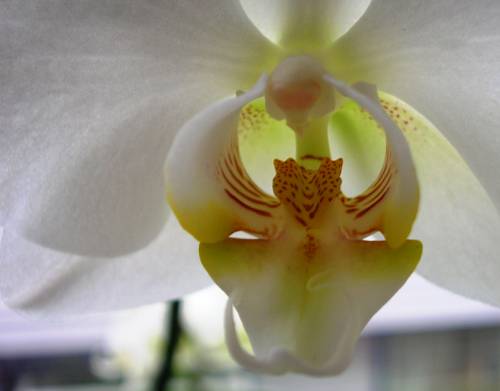
FAQ About Substrate Variations for Indoor Orchids

What is the best substrate for indoor orchids?
The best substrate for indoor orchids often depends on the specific type of orchid. However, a popular choice is a mixture of bark, perlite, and sphagnum moss. This combination provides excellent drainage, aeration, and moisture retention, which are essential for the healthy growth of orchids.

Can I use regular potting soil for indoor orchids?
Regular potting soil is generally not suitable for indoor orchids. Most orchids, especially epiphytic ones like Phalaenopsis, require well-draining substrates that mimic their natural growing conditions on trees. Potting soil tends to retain too much moisture and can lead to root rot.

Why is drainage important for orchid substrates?
Proper drainage is crucial for orchid substrates because orchids are highly sensitive to water stagnation, which can lead to root rot. A well-draining substrate ensures that excess water flows away from the roots, allowing for adequate air circulation and preventing disease.

What role does sphagnum moss play in orchid substrates?
Sphagnum moss is valued in orchid substrates for its moisture retention properties. It helps maintain humidity levels around the roots while still providing enough air space for the roots to breathe. However, it should be used carefully to avoid waterlogging.

How often should I change the substrate for my indoor orchids?
It is recommended to change the substrate every 1-2 years. Over time, substrates can break down and compact, which reduces aeration and drainage capabilities. Fresh substrate helps maintain optimal growing conditions.

Can coconut husk be used as an orchid substrate?
Yes, coconut husk is an excellent substrate option for orchids. It provides good moisture retention, is a sustainable choice, and breaks down more slowly than sphagnum moss, making it long-lasting in the orchid pot.

What are the benefits of using pine bark in orchid substrates?
Pine bark is a common component in orchid substrates due to its excellent drainage properties. It helps mimic the orchids' natural epiphytic growing conditions and provides a sturdy base for root anchoring.

Is charcoal beneficial in orchid substrates?
Charcoal can be beneficial in orchid substrates as it helps absorb impurities and toxins that can accumulate over time. It also aids in maintaining a healthy pH balance within the substrate mixture.

Can orchids be grown in a hydroponic substrate?
Yes, some orchid growers use hydroponic methods involving substrates like LECA (Lightweight Expanded Clay Aggregate). Hydroponics can provide excellent aeration and controlled moisture levels, but it requires careful monitoring and maintenance.

How does perlite enhance orchid substrates?
Perlite is added to orchid substrates to improve aeration and drainage. Made from volcanic glass, perlite helps prevent soil compaction and ensures that excess water drains away, protecting the roots from waterlogging.

Are there any organic alternatives for orchid substrates?
Organic alternatives for orchid substrates include materials like shredded tree fern fiber and coconut coir. These materials can enhance the natural growing environment for orchids while being environmentally sustainable.

What is the role of aeration in orchid substrate?
Aeration is crucial for orchid health because it allows the roots to receive the oxygen they need to thrive. Substrates with good aeration prevent root suffocation and promote strong and healthy growth.

Can pure sphagnum moss be used alone for growing orchids?
While pure sphagnum moss can be used for some orchids, such as Phalaenopsis, it's essential to monitor the moisture levels closely. Pure moss retains a lot of water, which can lead to root rot if overwatered.

How do I prepare an orchid substrate mix?
To prepare an orchid substrate mix, combine components like orchid bark, perlite, and sphagnum moss in proportions that suit your orchid species. Ensure all materials are clean and free from pests before using.

What substrate should I use for an orchid that prefers drier conditions?
For orchids that prefer drier conditions, such as certain species of Dendrobium, a substrate with more bark and less moss is ideal. This mix allows quick drainage and reduces moisture retention.

Is it okay to mix different substrate types for orchids?
Yes, mixing different substrate types can be very beneficial for creating a balanced environment that provides airiness, drainage, and moisture retention according to the needs of your specific orchid species.

Does the size of orchid bark affect substrate performance?
Yes, the size of the bark pieces can affect the substrate's performance. Larger bark pieces provide more aeration, making them suitable for orchids that prefer drier conditions, whereas smaller pieces retain more moisture.

Can I use gravel in orchid substrates?
Gravel can be used in small amounts as part of an orchid substrate to enhance drainage. However, it should be used cautiously, as too much gravel can compact the substrate and reduce its effectiveness in aeration.

What substrates keep orchids hydrated without overwatering?
Substrates that balance moisture retention and drainage, such as a blend of bark and sphagnum moss, keep orchids hydrated without overwatering. Adjust the mix according to the specific needs of your orchid species.

How can I modify substrate if my orchid seems unhappy?
If your orchid seems unhappy, consider modifying the substrate by adjusting its components. Experiment with different ratios of bark, moss, and perlite to improve drainage, aeration, or moisture retention according to your observations.
